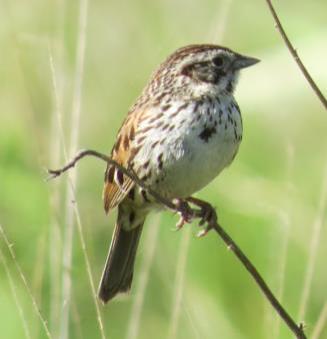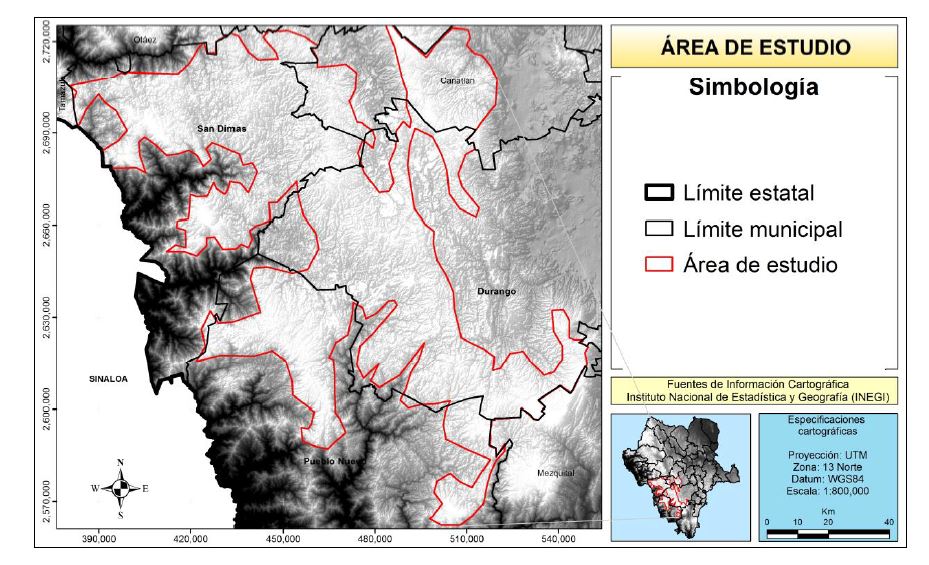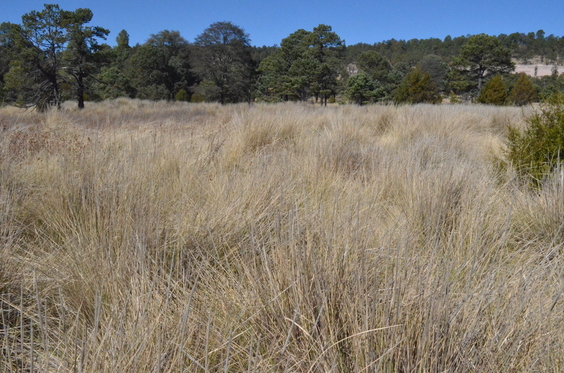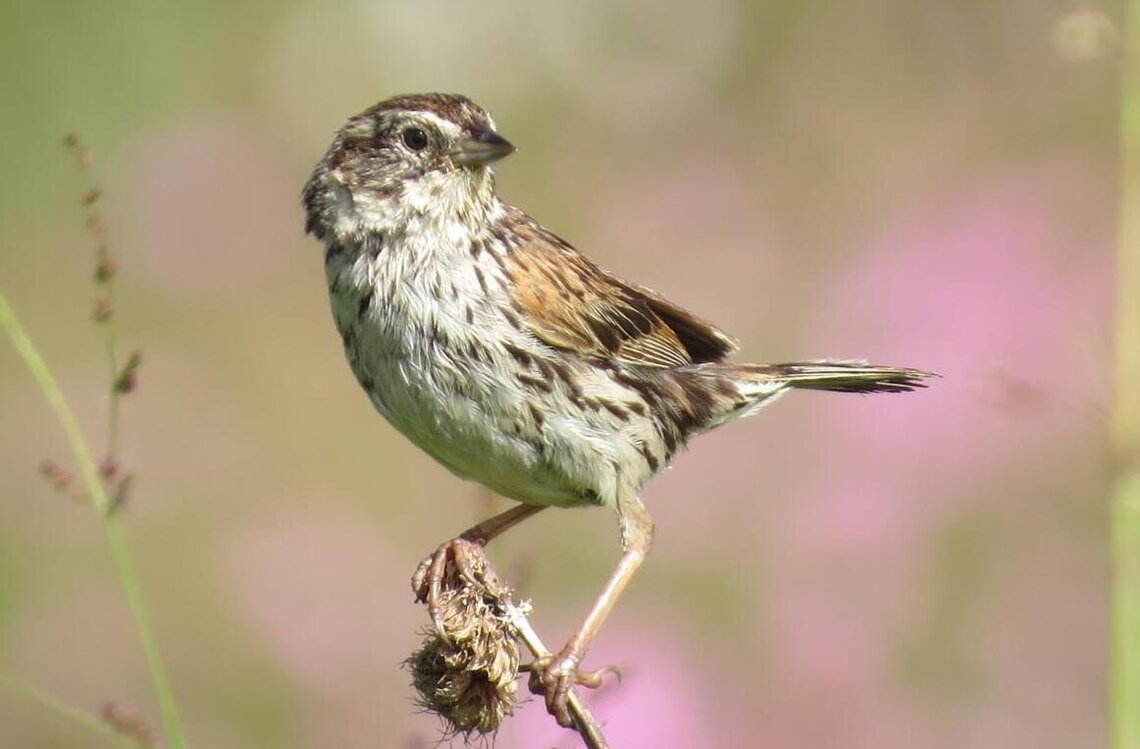By Carlos Enrique Aguirre Calderón, Cristóbal Gerardo Aguirre Calderón, Armando Sánchez Escalera, and María Esperanza Leticia Mancinas Labrador, Technical Institute of El Salto; José Ignacio González Rojas, Irene Ruvalcaba Ortega, Ricardo Canales del Castillo, Autonomous University of Nuevo León; and Miguel Ángel Cruz Nieto, Organización Vida Silvestre, A.C.
The Sierra Madre Sparrow (Xenospiza baileyi) is a highly endangered species endemic to the subalpine grasslands of the highlands of Mexico. In 2010 there were only two known and isolated populations, one of them located in the mountains of central Mexico (Oliveras de Ita et al. 2001) and another located in the area of Ojo del Agua del Cazador in Durango (Oliveras de Ita and Rojas -Soto 2006). In the area historically reported as Sierra de Bolaños, in Jalisco, the species has not been documented since 1889 (Navarro-Sigüenza et al. 2002). The species is classified as endangered by NOM-059-SEMARNAT-2010 and by the International Union for the Conservation of Nature. The Sierra Madre Sparrow (hereafter sparrow) is a species of Continental Concern under the Sonoran Joint Venture’s Bird Conservation Plan, designated as in Immediate Need for conservation action, with an initial goal to determine their presence across potential habitat.

Funding support from the SJV in 2010 made it possible to carry out an ecological study in the Durango region, which consisted of quantifying the population in the Ojo de Agua del Cazador. Despite the fact that at least five locations with potential habitat were recorded, the presence of the sparrow outside the Ojo de Agua del Cazador could not be confirmed. The project also made it possible to characterize the habitat and estimate the size of the population as a maximum of 18 individuals (7 bands were placed), and obtain samples (n = 9) for later evaluation of their genetic variability.
The Ojo de Agua del Cazador Ejido land remains unprotected because military exercises are carried out there, which cause disturbances. Other threats in the region include habitat loss through conversion of these grassland fragments to agriculture, overgrazing, and destructive fire that degrades the plants that the sparrow uses for nesting. However, the search for new populations in this region is very encouraging, as personnel from the Technological Institute of El Salto located an unquantified population of sparrows in 2016 at the Ejido 12 de mayo, and another population in 2017 at the private property at Ex Hacienda Coyotes.
For this reason, it was necessary to propose a new field project to determine the size of the reproductive population in these two new locations, and verify its presence in other sites in the southwest of Durango. The information will be important to define the status of the species in the Sierra Madre Occidental. This project is part of an initiative established 20 years ago to conserve the most vulnerable bird species in the Sierra Madre Occidental.
With a grant from the SJV Awards Program, our team carried out another project during 2018-2019 to study the recently documented populations and survey potential habitat in Durango. The main objective was to carry out field samplings to determine the sparrow’s presence and abundance in localities with recent, historical and potential distribution records. Results include holding two workshops to strengthen local capacities in sparrow identification, capture, safe nest management, use of mist nets, and banding. We also created maps and databases to record the visited localities, confirmed records of their current distribution and abundance, and obtained samples to carry out a comparative geographical and temporal analysis of genetic diversity.

Study Area for Sierra Madre Sparrow surveys in Durango, Mexico (map by Armando Sánchez).
We visited thirty-one areas including those with historical records, of which 26 were identified as without potential habitat (without bunchgrass), 18 with potential habitat (with bunchgrass) and 8 with the presence of sparrows. We detected 172 sparrows at the eight sites, which we consider a maximum count per site as it was during the reproductive season. The two sites with the highest abundances were La Lobera and La Cantera, both with ejidal land tenure, followed by Bajío del Casco and Potrero San Antonio, both within the private property at Ex Hacienda Coyotes.

For future studies, the 31 areas with potential habitat could be resurveyed. The area of Ejido 12 de mayo, where there are five sites with the presence of Sierra Madre Sparrows, represents an opportunity for conservation because of the large number of individuals, and high activity during the reproductive season. Similarly, the Ex Hacienda Coyotes property, in which we documented two sites with sparrow presence, could be very important for the species’ protection, as there may be a greater possibility of turning it into a Voluntary Conservation Area due to private ownership. Unfortunately, during this work the Sierra Madre Sparrow was not detected in some areas that previously it had been detected including the Ojo de Agua del Cazador, which suggests local extinction processes.
Finally, the genetic variation analysis of the COI mitochondrial gene among the populations showed less diversity in Durango than in Mexico City. In turn, the analysis of adaptive genetic variation (Toll-Like genes) showed that the populations of Durango and Mexico City are genetically differentiated. Likewise, a reduction in the variation of the COI was observed in Durango in a period of only 14 years, comparing the reported values of a 2004 sample in Ojo de Agua El Cazador, and the following samples carried out in this project in Durango. On the contrary, for the population of Mexico City, no change in genetic variation was observed. This loss pattern could be associated with the differences between the sizes of both populations.
For more detailed information, please see:

